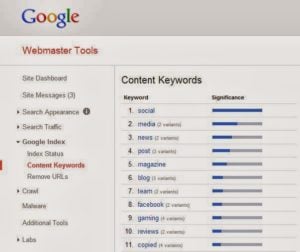Your Customer’s Journey and How You Capture With Keywords
 In today’s media-rich landscape, full of media-savvy consumers, the role of search engine optimization and keyword searches has had to evolve.
In today’s media-rich landscape, full of media-savvy consumers, the role of search engine optimization and keyword searches has had to evolve.
At one time, SEO seemed as simple as using the right keywords to help clients climb high in page rankings. (Well, it was never actually that simple, but we’re using broad brushstrokes today.)
Now consumers aren’t ready to click and commit right away. They need to be wooed, to be befriended and convinced. It’s a process, not a one-time interaction.
They will conduct a lot of different searches before they actually engage your brand directly. And they will pay close attention to what others say about you and the ratings they give. Before they jump into bed with you, they will want to get the approval of their friends or peers.
As we said, an online purchasing decision comes at the end of a process, with strategies and content tailored to achieve different goals at each stage. This sales or decision funnel can have many different parts but broadly speaking you start with building awareness, move to creating desire and forming a relationship, and finally you close the deal.
At the beginning of the decision funnel, the idea is to create awareness and drive desired targets to your site. Content might be a general research guide or ebook, or a whitepaper, or an interview with a digital marketing performance expert.
The next stage is to build on this relationship and start to create a desire to purchase. To show you understand their needs, you could, for example, create special landing pages with content devoted to problems you know your customers care about.
Your content would not only demonstrate that you know their problem inside and out, you would set up the expectation that you have a great solution for it as well.
With interest sparked and trust established through content that addresses your target’s drivers/pain points, you can move this potential customer from a visitor to qualified lead by offering a white paper or case study. This final piece of content could trigger that moves the potential client to contact your for a free assessment or consultation.
An automatic email could also be sent out with a request to schedule one.
Of course the keywords that capture search interest and the content for each stage of the decision process have to be carefully considered, researched and tailored to achieve specific results at every stop on the journey.
Many other considerations must also come into play. For example, your campaign needs to take into account the cross-platform nature of many consumers’ web experience, with the rising popularity of mobile computing specially addressed.
And you have to know that things are not always what they seem. The success of a display ad in a pay-per-click campaign can’t always be judged by how many clicks it gets. These ads can serve to create an awareness in consumers – even without the clicks – that eventually leads to a purchasing decision.
Consumers are becoming as smart as their phones. Your digital marketing has to be equally intelligent in order to make a productive connection.